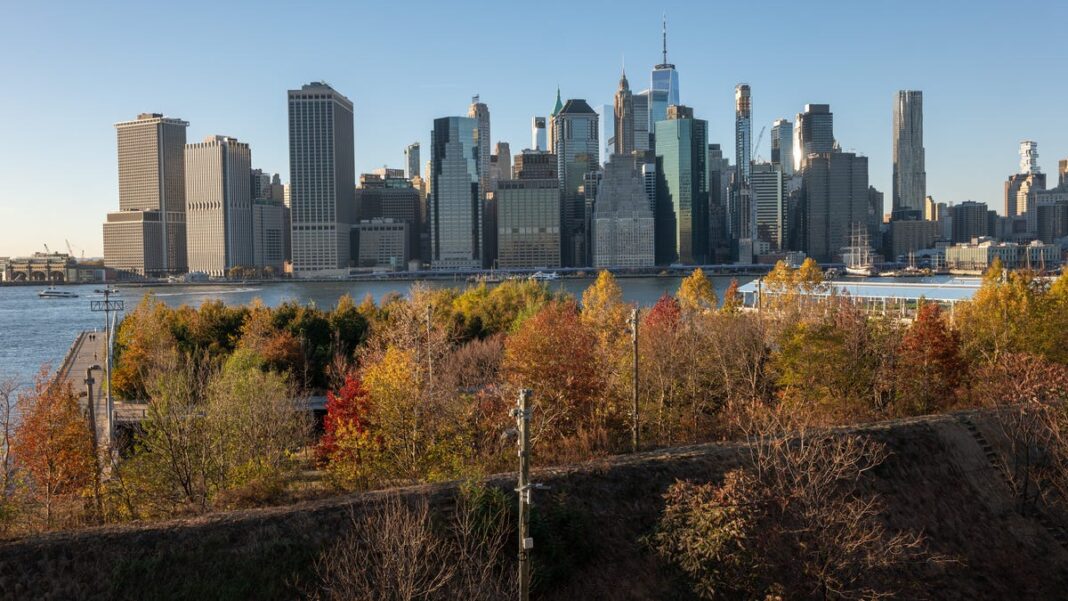New York City issues first drought warning in 22 years due to extreme rainfall shortage
On Monday, New York Mayor Eric Adams announced the city’s first drought warning since 2002 following historically minimal rainfall and active brush fires.
On Monday, Mayor Eric Adams of New York City declared the first drought warning in 22 years due to significantly low rainfall and elevated temperatures.
The city’s departments will implement measures to alleviate worsening drought situations, as indicated by the mayor’s office. These measures include reducing water usage in park fountains and golf courses, repairing plumbing leaks, and restricting lawn watering. Additionally, there will be less frequent washing of public transit vehicles.
“Our city vehicles might appear a little dirtier, and our subways may be dustier, but it’s necessary to prevent a more severe drought emergency,” said Adams.
City officials will also pause the last phase of a $2 billion Delaware Aqueduct repair project so that it can be reopened, allowing water to flow in from four reservoirs. The 86-mile aqueduct supplies about half of the city’s water, according to the mayor’s office.
On the same day, Governor Kathy Hochul declared a statewide drought watch, encouraging residents to save water in the coming weeks. Currently, fifteen counties are under a drought warning.
“The recent unseasonably warm temperatures and low rainfall have resulted in dry conditions across many New York counties, leading to Hudson Valley and New York City counties being elevated to drought warning status along with a statewide drought watch,” Hochul stated.
This unusually dry October has contributed to drought conditions nationwide. As of Monday, the U.S. Drought Monitor reported that approximately 41% of the United States, or about 149 million people, are under drought watches, impacting over 318 acres of main crops and causing some farmers to postpone planting winter crops. The dry weather has also led to an increase in wildfires, especially in the Northeast.
“This situation is abnormal, and though you might appreciate the lovely weather in November, the truth is that climate change is real and affecting our city,” Adams remarked. “While we cannot control the weather, we can take steps to mitigate the risk of drought emergencies in our city.”
Drought conditions raise fire hazards
The dry conditions have also sparked an unusually busy fire season in New York. The fire department reported responding to 229 brush fires between October 29 and November 12, a record for any two-week period.
Brush fires along the New York-New Jersey border forced over 160 homes to evacuate. Tragically, an 18-year-old park employee, Dariel Vasquez, lost his life while combating the fires, according to state officials.
A statewide ban on burning is in place through November due to the heightened fire danger.
The United Nations states that extreme weather events are anticipated to intensify with global climate change, as rising temperatures disrupt precipitation patterns and the water cycle, increasing the likelihood and severity of floods and droughts.
Unprecedented low rainfall
According to New York City Emergency Management, Central Park experienced an all-time low rainfall of 0.19 inches from September 19 to Sunday. This marks the driest seven-week period in Central Park’s recorded history since 1869, surpassing the previous record of 0.27 inches set in 1995.
The mayor first announced a drought watch on November 2 due to the unprecedented lack of rainfall, mandating city agencies to revise their water conservation strategies.
The last time New York City faced a drought warning was in 2002. Prior to that, a drought watch was issued in December 2001 because of low reservoir levels, escalated to a drought warning the following month, as per the New York City Emergency Management.
In April 2002, the situation was classified as a drought emergency, which persisted for 14 months, as stated by officials.
This season’s dry spell isn’t just confined to the Northeast; last month was recorded as the second-driest October for the contiguous United States. The Copernicus Climate Change Service has also indicated that 2024 will “almost certainly” be the hottest year on record.
Furthermore, 2024 is predicted to be the first full year in which global average temperatures will be at least 2.7 degrees above preindustrial levels, a threshold that global leaders and climate scientists aimed to remain below to manage rising temperatures.

